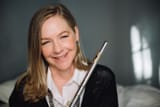Treasuring the Here and Now
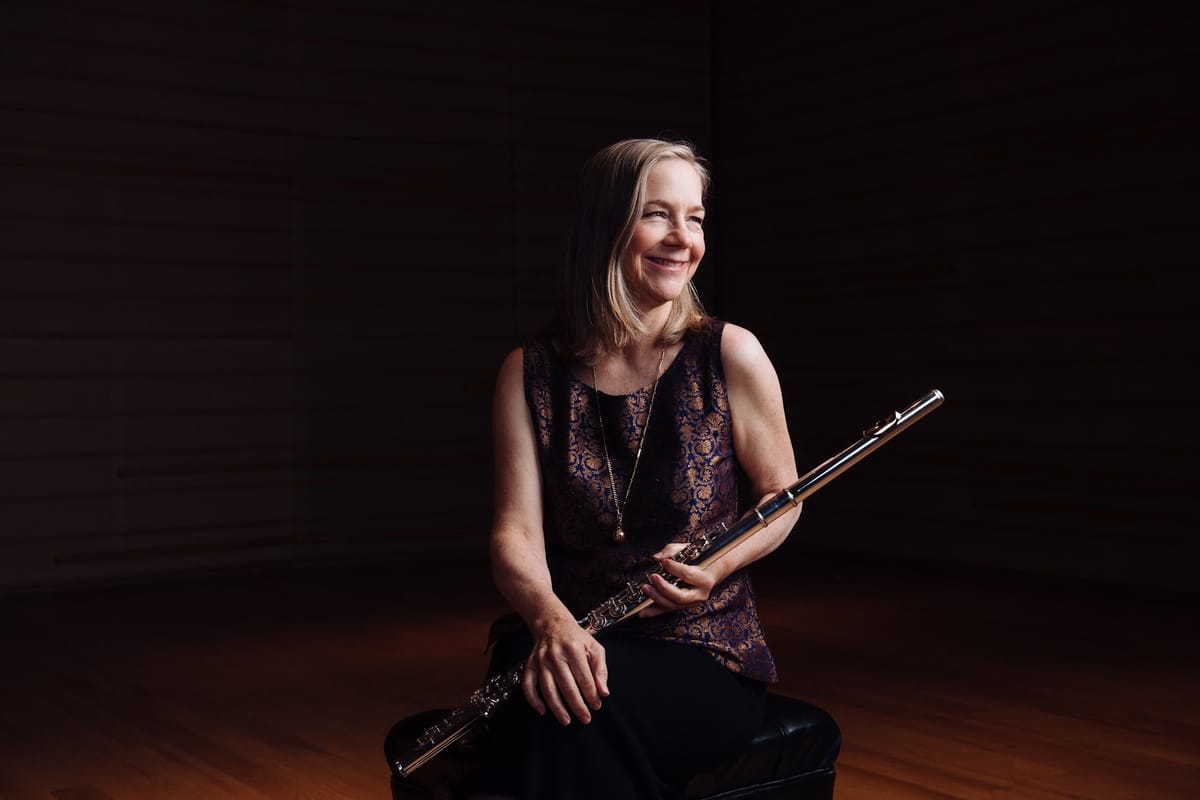
A report from Lisbon, Portugal on preparing to record a CD of recent music by Portuguese composers — and why it matters.
Who is your favourite composer? Mozart? Bach? Schubert? Puccini?
One of the pleasures of being a classical music lover is pondering such questions: listening, comparing, considering, and re-considering. Our preferences may shift over time with an accrual of life experience shaping our taste, our needs, our wants. Eventually, we might give up the idea of one favourite altogether, and choose a “bouquet” instead of a single “flower”.
Since there’s no correct answer anyway, the reward is in the listening itself. Yet there is no reason our love for established composers and repertoire should preclude exploring the music of our own time and place… the music of what I am calling “the here and now”.
Luckily, it is not a case of “either/or”. It is a case of “yes AND”: we can love Bach AND composers of our own day. Exploring both “old” and new music can lead us down amazing “rabbit holes”, showing us connections between composers or genres in a mutually enriching way.
What can be exciting about exploring music of “the here and now” is that centuries have not passed, so-called “lesser” composers have not been “sifted out”—for better or worse—from the great masters. Everything is in the mix, everything is still up for grabs. The “ism” of our period is—hooray!—not yet determined! Stars rise up… will they remain or be eclipsed by another?
In the end, none of that “horserace” matters; we are free to love… whatever music we want. (Of course this is true for the “classical canon” as well, but it might be a bit awkward to maintain a posture of disliking Mozart or Bach!)
I find myself pondering all this as I prepare to record a CD of chamber music by eight composers from or living in Lisbon, Portugal, where I put down roots over 30 years ago. In the nitty-gritty of the work, I ask myself: is there a purpose to this? Will bringing this CD into existence have an impact, in light of the “sea” of music available online to anyone with a smartphone?
The answer is: YES! For composers, for musicians, and for music lovers. Let me show you why, after a few words of encouragement.
Wait! Modern music… do I dare listen?
If the mere idea of modern music puts you off, fear not! Have you have been led to believe that you must understand new music intellectually in order to appreciate it? Nonsense! In the same way that you can enjoy Bach’s Goldberg Variations (as I did for quite some time) without knowing all—or even any—of the brilliant compositional techniques underlying the work, you can perfectly well enjoy a contemporary piece without being a specialist. Insight merely brings increased appreciation.
Granted, there is some music whose goal is to shock the classical-music public—just as there are artists and writers whose intention is to generate a scandale. But this is just a tiny subset of contemporary composers. Naturally, having personally chosen most of the works for this recording, I believe they are inspired and beautiful.
I would also like to assure you that you have already listened happily to hundreds of hours of contemporary music—in the form of movie and TV soundtracks. Watching a thriller? Behold! Contemporary music: electronic effects, exotic-sounding “world music” instruments, extended techniques (unconventional uses of traditional instruments), and contemporary harmonies galore. It seems there is no problem as long as we have a visual to hang on to! So if you like, listen to unfamiliar music imagining what scenario might be on the screen—it’s fun!
Composing in the 21st century – getting your foot in the door…
It might seem obvious, but recordings are of fundamental importance to composers. Unlike visual arts, producing a score is not enough to “ship the product”, in the lingo of Seth Godin and modern entrepreneurial culture. Musicians must be willing to learn the score and performances must be organised in order for a work to reach an audience. Typically a piece is commissioned by a musician, an ensemble, or an institution, and leads to a premiere performance… but not necessarily to a second performance, or a usable recording. The absence of these can lead to a state of suspended animation for the score—existing only liminally.
Naturally, this would be a source of frustration. The amount of time involved in composing and preparing a score is frighteningly out of proportion if the result is a single performance. While many orchestras and ensembles commission premieres—wonderful initiatives—perhaps scheduling second and third performances would be even more valuable! Furthermore, the quality of the premiere performance is subject to the vagaries of rehearsal time, the acoustics, and the quality of the recording. One composer friend even related to me that a premier of his music was recorded but withheld from him, the concert hall management retaining the rights to a recording of his original work! The mind boggles…
In the case of a single performance, the new work cannot benefit from the magical element of time: time to mature, to be further polished, to be returned to and seen in a new light. This element of study over time is of unquestioned importance to any new reading of a classical masterpiece. For instance, a pianist may record a Beethoven sonata in their youth, and again in their maturity. Also, many different pianists will record it over the years, because while the notes are the same, the interpretation is coloured by the unique artistry of each performer. How odd would it be if Beethoven’s “Emperor” Piano Concerto had had only one interpretation? Very, very odd.
Finally, with a first recording, a work begins to “exist” in a broader arena and has a better chance of being taken up successively by different artists and generations, over time. Making a studio recording—assuming dedicated performers—assures a faithful first “portrait” of the work, without the risks of live performance: extraneous noise, acoustic problems, equipment failures. At the very least a CD is a good start and an absolute necessity for the composer to create or augment his or her public profile. It is a precious calling card.
The performer in the 21st century – can’t I just keep playing Mozart?
Yes, you can keep playing Mozart! The question is, wouldn’t you like to also participate in music as a living and changing art “here and now”—as Mozart did? Playing new music shines a clarifying light on “old” music—which after all once was new—making for a positive feedback loop between “old” and new.
In the case of wind and percussion instruments, there is an added attraction to performing newer music. As the construction of the instruments changed fundamentally since the late 19th century, more recent works exploit the full range of their possibilities.
For musicians involved in recording new music, it is both a challenge and a privilege. Making a premiere recording ideally involves true dedication since the results will not just evaporate into the ether after a one-off performance. Though professional musicians record on a regular basis, oftentimes there is an element of being a cog-in-the-wheel when the choice of repertoire and every other detail is left to someone else. Having a say in the project, and a friendly relationship with the composer—someone you can simply phone if you have a question—is much more gratifying: there is a personal and artistic involvement that will likely elevate the recorded performances. And obviously, like composers, performers also need “calling cards” in the form of CDs.
For the technical team—sound engineer, photographer, graphic designer, and producer—it is also desirable to work at the highest possible level for themselves and on behalf of the composers and musicians. The huge range of instruments and non-standard ensembles involved in contemporary music provide an opportunity to showcase the recording engineer’s talent. The producer oversees the artistic concept as a whole, while the design team strives to translate that concept into an attractive visual. For our CD I am delighted to have practicing musicians (fellow flutists!) on the team, contributing their valuable artistic sensibilities.
An invitation for you, dear readers: be explorers, too!
And what about you, the audience? When you have the entire catalog of Western (and World) music available in a click or two, why would you need contemporary music?
You don’t!
But may I suggest that you might enjoy delving into the incredible richness and variety of the “here and now”? After all, we no longer get to town in a horse and buggy! We are citizens of a fast-changing world; new music reflects our modern condition just as “classic” composers reflected theirs. Effectively, being a fan of Jane Austen does not preclude our enjoying Hilary Mantel, Jhumpa Lahiri, or Vikram Seth, does it?
There is something for everyone out there waiting to be found—new music is a veritable smorgasbord! Explore what composers are doing in the face of our ever-faster-changing modern culture, drowning in information. Going along for a ride? Ignoring? Resisting? Remember there is no right or wrong—you are free to enjoy or not enjoy. Don’t enjoy? Just try something else.
As an inquisitive listener, you will be participating in the continued development of the art of music—what better role could you play?
Meet the team of “(flut)uações”
Now I would like to introduce you briefly to the composers, works, musicians, and technical team that is lined up to record our CD in January of 2022.
Firstly, the young man responsible for overseeing the production: my colleague, the flutist/musical producer Tomás Quintais. It was Tomás who phoned me out of the blue from Coimbra, where I taught a class about 10 years ago, with the idea of competing for funding for a recording of Portuguese music from the Portuguese Culture Ministry. After a full year of Covid-19 restrictions, the idea of a worthy and challenging project was music to my ears!
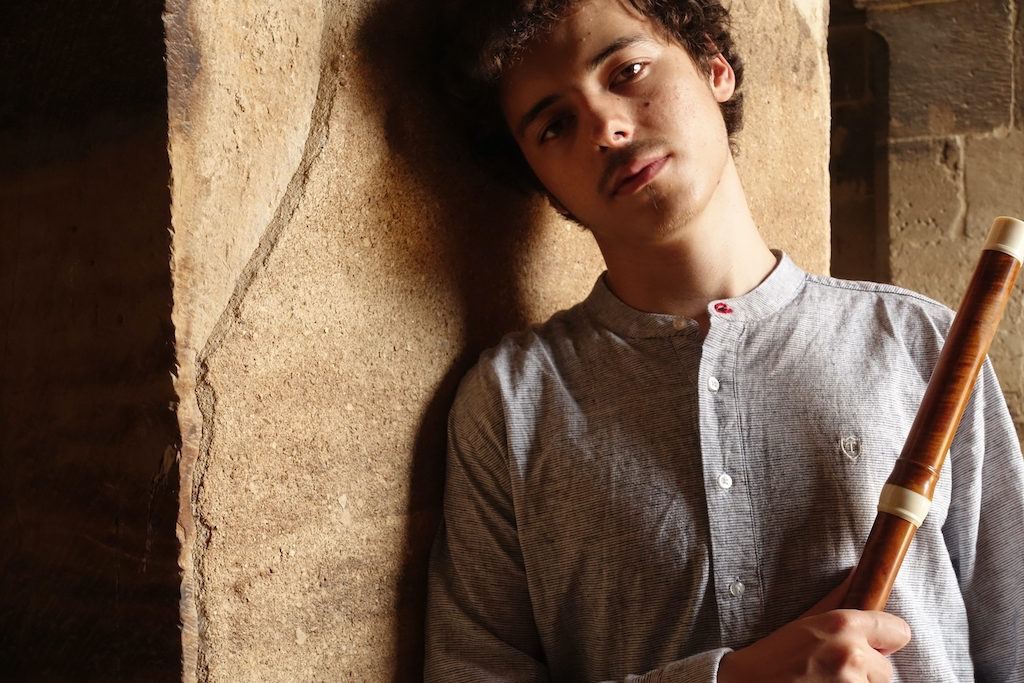
Together we chose the pieces, many of which I had premiered or commissioned, and musicians, and prepared the proposal for a CD called “(flut)uações” (pronounced “floot-oo-uh-soigns”); a mix of the Portuguese words for “flute”,“floatings”, and “fluctuations”—of light and shade, movement, emotion. Our project was one of 54 chosen for support—out of more than 600 proposals. Since then, we have been busy mapping out the logistical details, from timings to equipment, rehearsal schedules, and all the production elements.
The excellent design team is artist Cristina Guerreiro and flutist-photographer Manuel Luís Cochofel, photographer for the CD’s cover and booklet. We look forward to sharing his in-action photos with Serenade readers after the recording sessions.
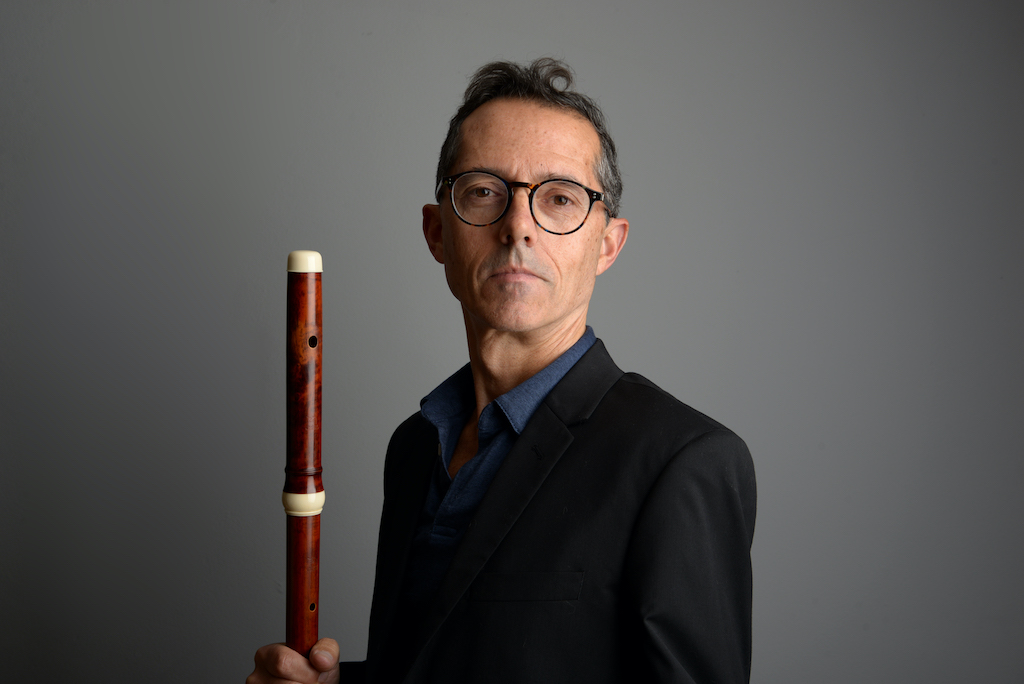
And on to the composers, who represent the crème de la crème of established Portuguese composers and are active in musical life here in multiple capacities. No composers “lost in reverie” here! Some are “foreign imports” and some have relocated elsewhere, but all represent the vibrant music scene here, which has become a new melting-pot of artistic talent and energy.
I will start with four Lisbon-based Portuguese composers: Luís Tinoco, Alexandre Delgado, Carlos Marecos, and Anne Victorino d’Almeida.
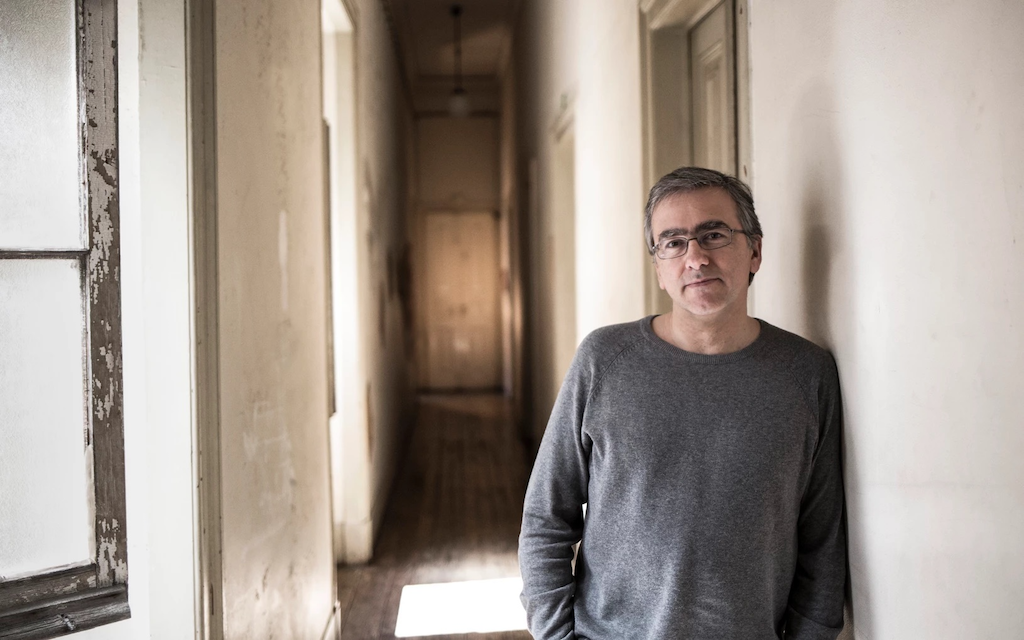
Luís Tinoco is an important figure in Portuguese musical life, composer of a wide variety of works performed all over Europe and in the USA, as well as professor, radio personality, and director of the most important youth music competition. He is clearly someone with tremendous organisational skills—but also an easygoing, warm personality. His work “King George I, as Seen in Schiaparelli’s Telescope, Sailing his Barge upon Martian Canals” is an extraordinary sonic mix, with flute, electronic manipulation, and percussion instruments including the Javanese bonang, an exotic tuned set of gongs from Indonesia. This work has an otherworldly beauty that defies description.

Alexandre Delgado is a multi-talented musician and writer: professional violist, gifted translator, and music journalist whose wittily insightful critiques appeared in the top newspaper here during a decade. He is the composer of solo and chamber works and two darkly humorous operas. His “Suite from “Death and the Madman”” is written for vibraphone and marimba plus concert and bass flute. Adapted from his first opera, its surreal yet farcical atmosphere translates perfectly to the unusual duo pairing.
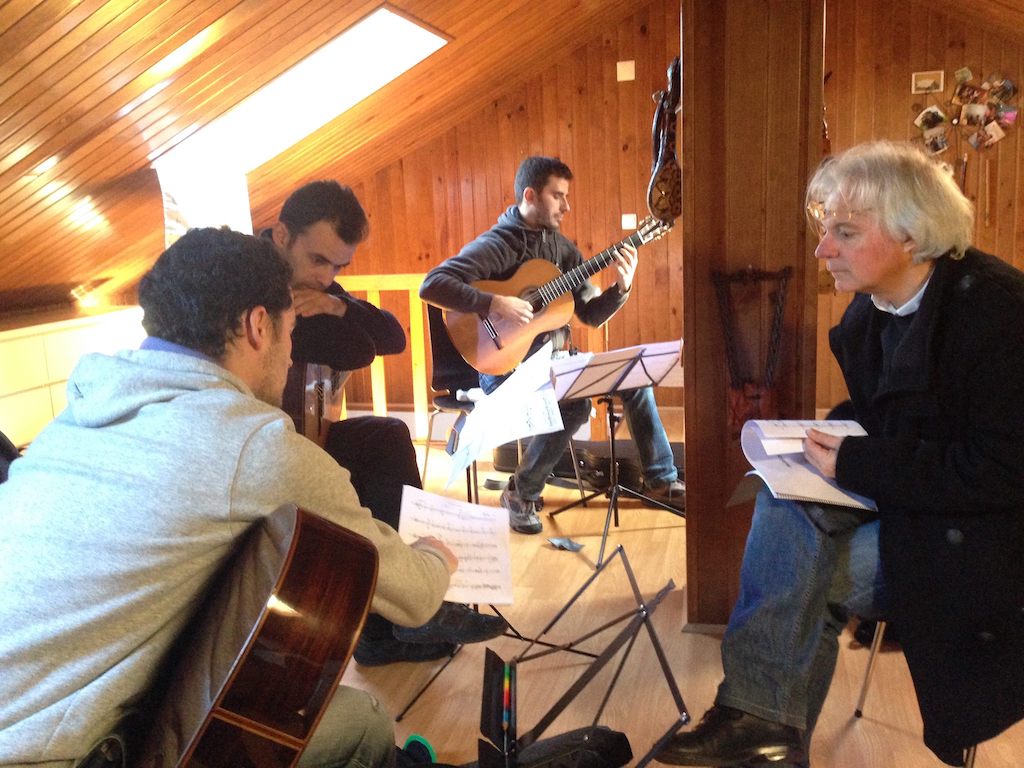
Carlos Marecos teaches composition at the Lisbon Superior School, conducts, and is the author of a remarkably colorful catalog of chamber works and opera. Some of his works, such as the “7 Instantes” (“7 Snapshots”) written for my trio Syrinx : XXII and premiered in India in 2016, are based on Portuguese folk melodies, harmonised with a unique genius. “7 Instantes” was clearly the audience favourite during our India tour. “Five for Two” is written for flutes—piccolo, C flute, alto and bass—plus an entire roomful of percussion instruments, and conjures up a mysterious, primal setting.

Anne Victorino d’Almeida is another polymath: a professional violinist, Professor of Violin at the Lisbon Conservatory, and composer of chamber works and film soundtracks, she is currently in the administration of the Lisbon Opera House, and…is the mother of three! She comes from a musical and theatrical French-Portuguese family, her father being the noted composer António Victorino de Almeida. Her cello solo “Three Poems and a Cello” is inspired by poems of the 20th Century Portuguese poet Eugénio de Andrade.
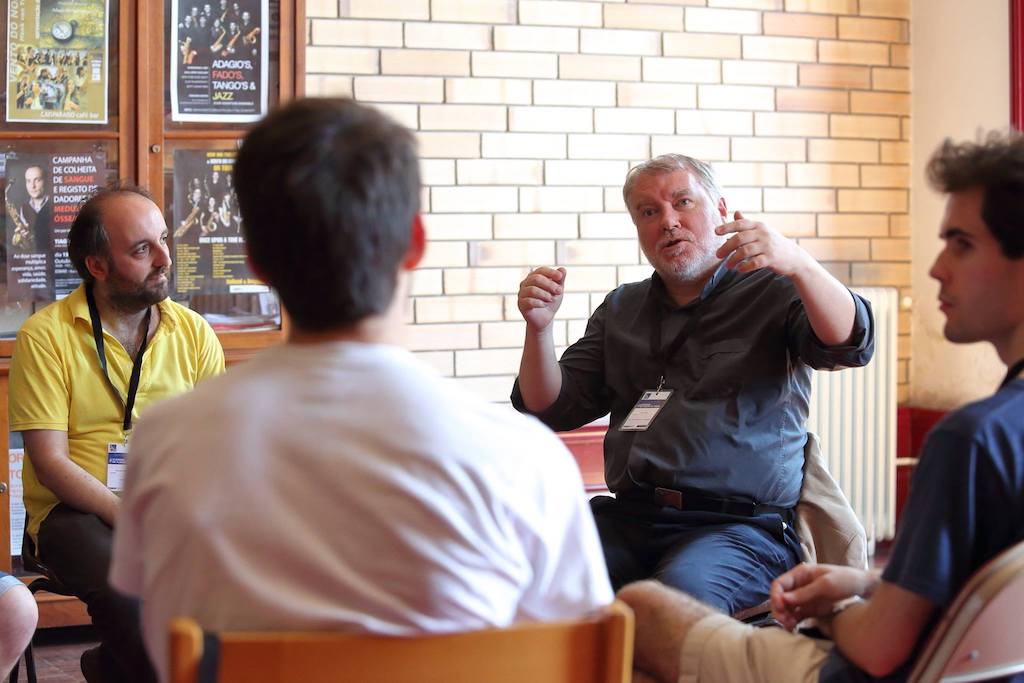
Ivan Moody, an English composer, researcher, and writer, has resided in Lisbon for over 30 years, composing chamber and vocal works in a style that reflects his involvement with early music, period instruments, and liturgical chant. Like Stravinsky or Arvo Pärt, his works blend old and new forms and techniques, often creating exalted, magical atmospheres. Both “Lyrebird” for solo piccolo with voice and “Istella”, for bass flute and vibraphone, were written at my request.
Two featured composers now live abroad after having studied in Lisbon: Sofia Borges, in Berlin, and Andreia Pinto-Correia, in New York City.
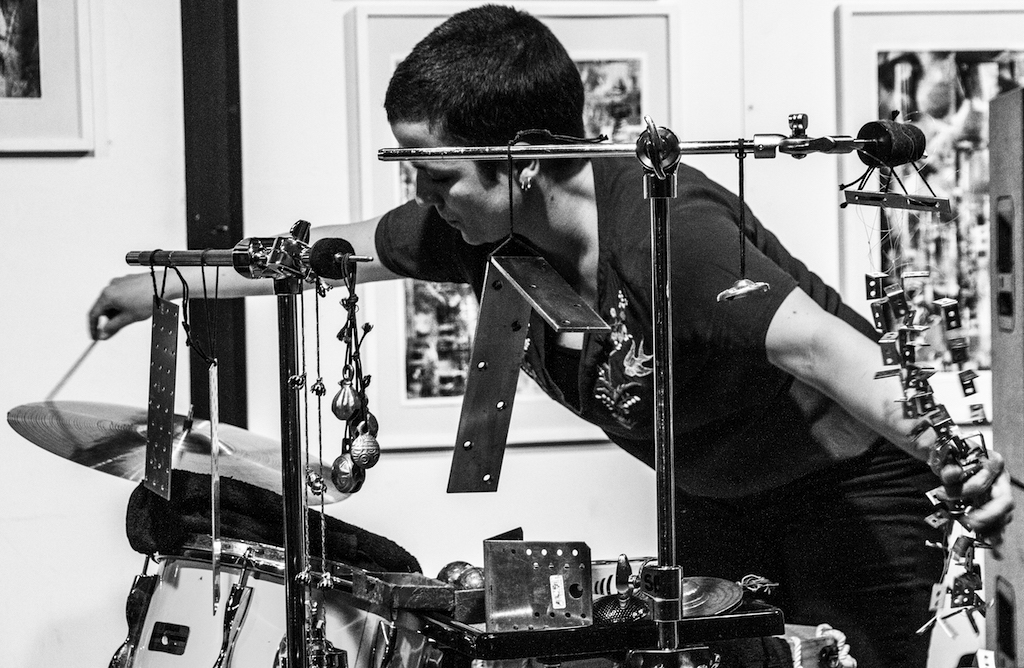
Sofia Borges is a percussionist and composer working on the leading edge of experimental music and electronics. She works with sound design, inventing her own percussion instruments, and creates interdisciplinary works blending genres and traditions for chamber, orchestral and vocal groups including theatre, dance and multimedia installations. Her new work “A Part of Every Day” for drum kit and electronics was written for Francisco Cipriano especially for this CD.
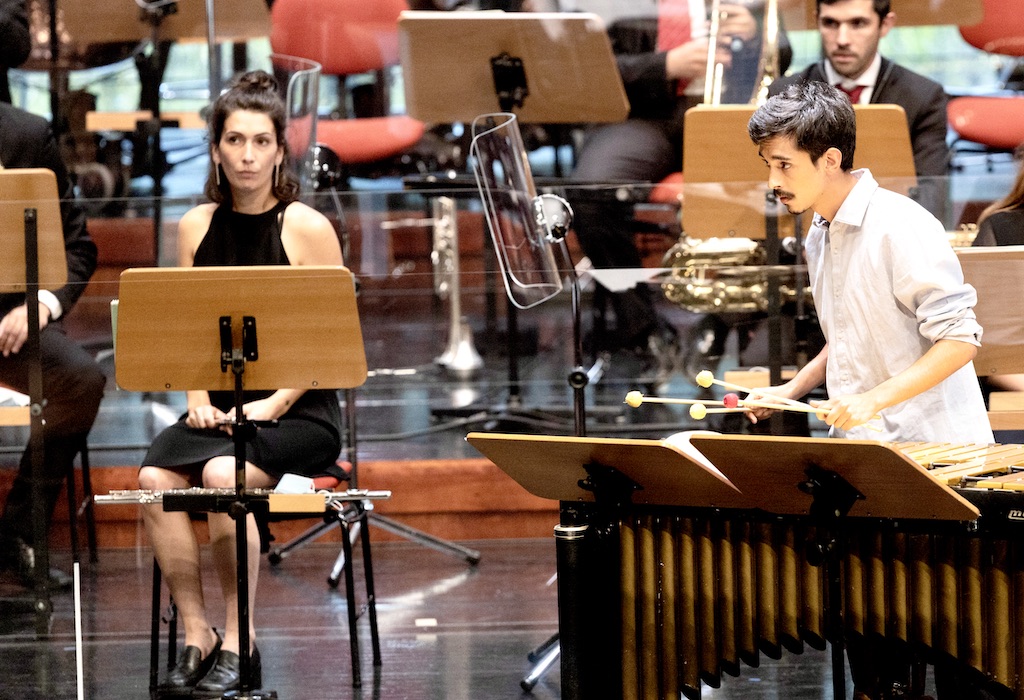
Andreia Pinto-Correia studied in Boston and now resides in Brooklyn, New York. She has been honoured by the American Academy of Arts and Letters (2020) and the Guggenheim Foundation, and has received commissions from the Boston Symphony Orchestra and the Tanglewood Music Center among many others. Her work is “a major contribution to the dissemination of Portugal’s culture and language, perhaps a contribution larger than could ever be imagined.” (Jornal de Letras [Literary Journal]). She is currently preparing “Os pássaros da noite” (“The Birds of Night”), a commission from the New York Philharmonic that will premiere in March with Gustavo Dudamel conducting. Our disc includes “Pleistocene Landscapes” for solo alto flute, and “Sobre um Quadro de Júlio Pomar” (“On a Painting by Júlio Pomar”) for flute and cello, two works showcasing sonorities and tunings that echo the Moorish culture linked to Portugal’s past.

The eighth composer is myself, contributing a work in three short movements for solo C flute, “Places I Go in my Sleep”. Like other flutist-composers who are part of a tradition dating back to Hotteterre and Blavet in 18th century France, I come to composing as a natural extension of playing flute. The three movements are musical depictions of shifting dream states.
The four performers recording for the album also exemplify the international nature of the Portuguese music scene:
Elizabeth Davis, percussionist (Tinoco). This remarkable English percussionist has enchanted the Portuguese public as a soloist, chamber musician, and tympanist of the Lisbon Opera House Orchestra for three decades. She has also studied the Javanese gamelan in Indonesia, and in Tinoco’s work she uses a bonang made specially for her.
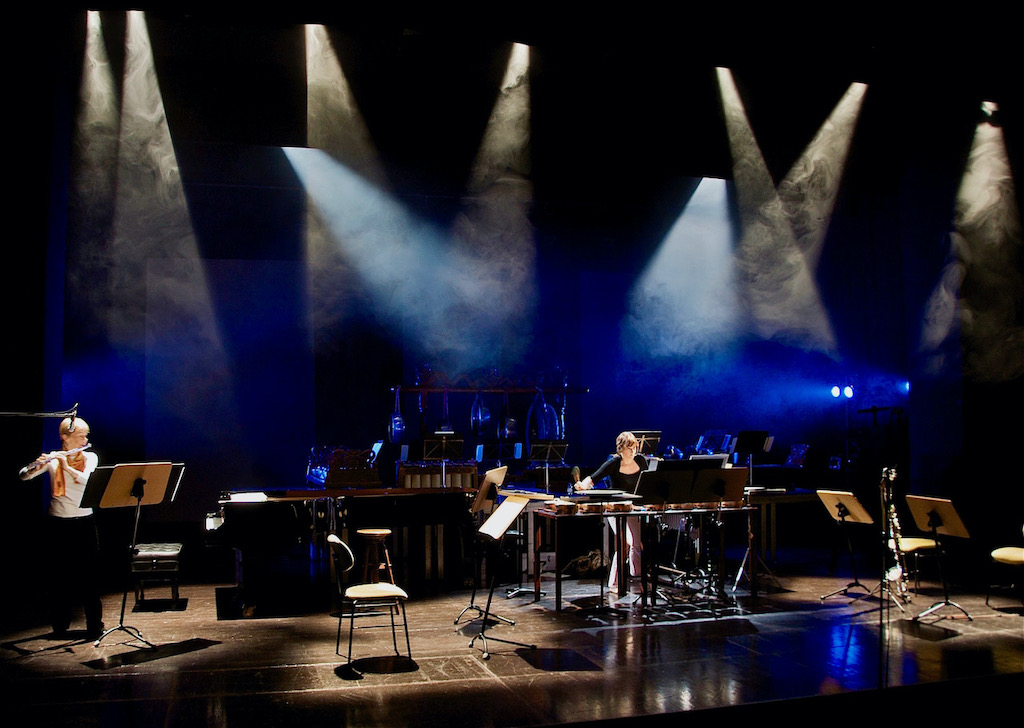
Francisco Cipriano, percussionist (Delgado, Marecos, Moody). The star percussionist of his generation of Portuguese musicians, he is currently finishing his Masters degree in Switzerland. His musicality, finesse, and astounding technique are incontrovertible proof of the ascension of Portugal as a training ground for young musicians of world-class level.
Catherine Strynckx, cellist (Victorino d’Almeida, Pinto Correia). Portugal’s top chamber cellist, she studied in her native France and in the UK at the Menuhin School. She is a sought-after teacher and a longtime member of the Lopes-Graça Quartet, Musicâmera Productions, Syrinxello, and other chamber groups.
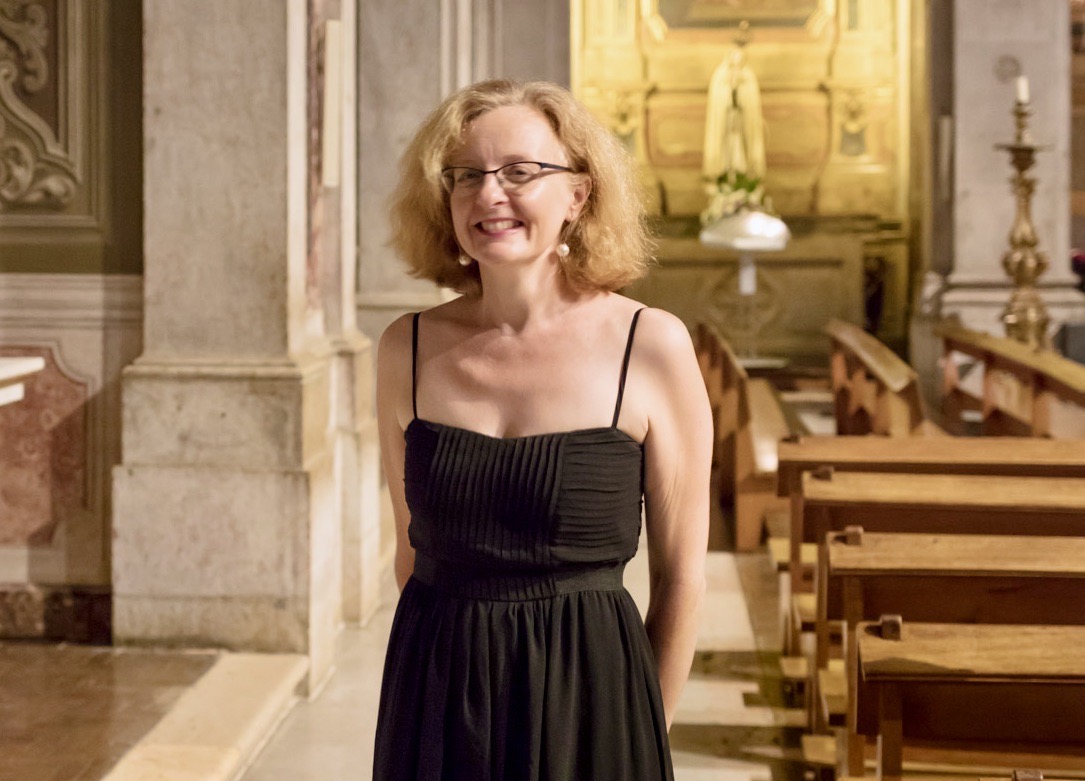
The fourth musician is myself (Pinto Correia, Tinoco, Delgado, Moody, Marecos, Rawdon). I have performed new music constantly since high school in various orchestras and chamber groups including flute solo, flute and piano, wind quintet, flute and guitar, flute and percussion, and mixed ensembles. As a member of OrchestUtópica, I premiered works by dozens of contemporary Portuguese composers, among whom those whose works are on this CD.
Tick, tick, tick: counting down, and some final thoughts
Soon, all our preparation and planning will converge on the recording days. While pop musicians are famously (and possibly apocryphally) known for recording spontaneous improvisations, a classical CD with a vast and non-standard array of instruments must be planned out meticulously. For months we have been practicing, rehearsing, receiving feedback from composers and the producer, plotting the best use of studio time, microphone set up, and on and on—a slow process we trust will result in two “fast” days of recording.
One of the goals that Tomás Quintais and I had for this CD was to present the largest possible number of composers and a maximal “soundscape” with only four musicians. With one cello, four different sized flutes, two mallet instruments, and a wide array of other percussion instruments, a kaleidoscopic sonic palette emerges. It is further broadened by the inclusion of “extended” sounds such as speech, singing, tone manipulations, and electronics. One of the hallmarks of Portuguese genius is to make much from little, and I believe we have done that here.
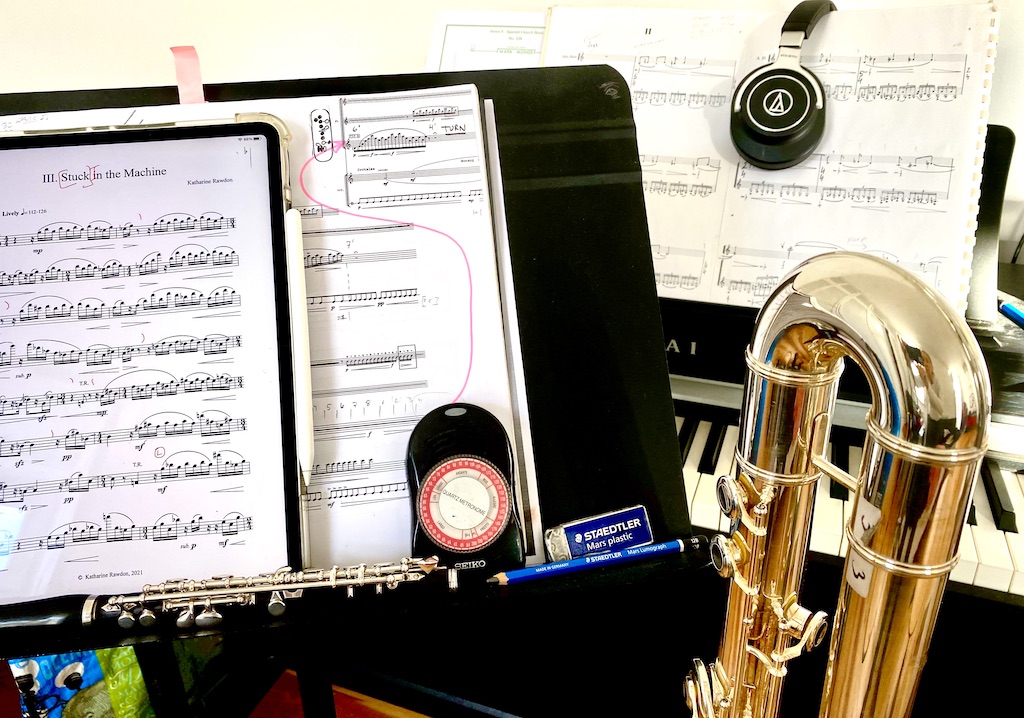
The different musical styles of the eight composers find a balance between contrast and similarity While each composer has a distinctive voice, they have in common a sophisticated use of timbre and texture that surely can be considered Portuguese.
Liner notes written by Ivan Moody for the CD will describe the remarkable explosion of the music scene in Portugal in the last several decades. Post-dictatorship liberation released latent creativity that propelled Portugal into a role far larger than its population of 10 million would suggest. I leave a full explanation for Moody’s notes but can vouch for the excitement of working in the midst of such a positive transformation.
We hope that the result of all our labours will be a silvery disc holding seventy-odd minutes of delight, enchantment, and surprises. You will also find beauty—the fundamental principles of art being worked out anew: the balancing of tension between order and chaos, expression and restraint, power and fragility, joy and sorrow.
And we hope you will join us, to listen to a little bit of our “here and now”.
To receive notice when the CD “(flut)uações” is available to purchase or stream, click here.

